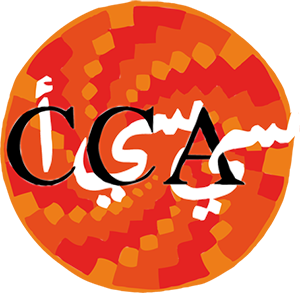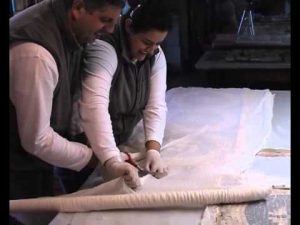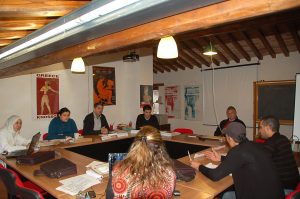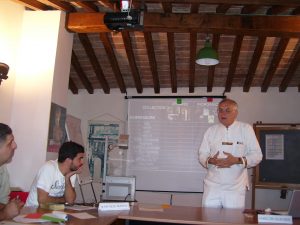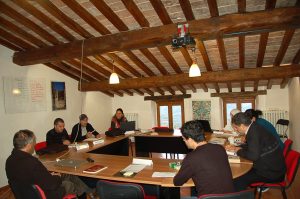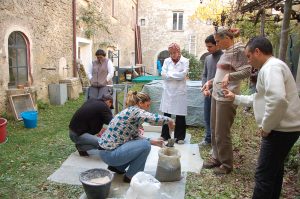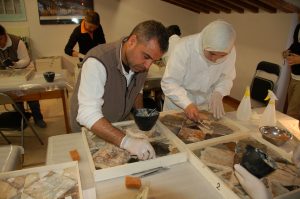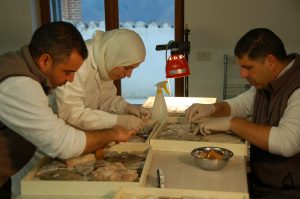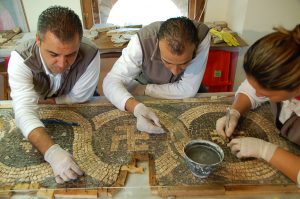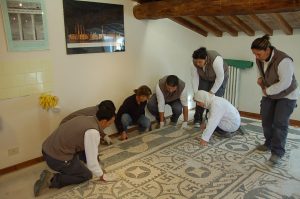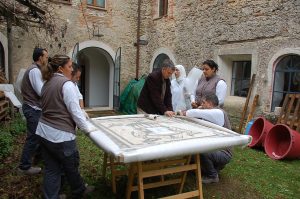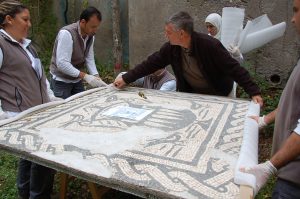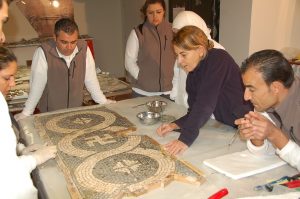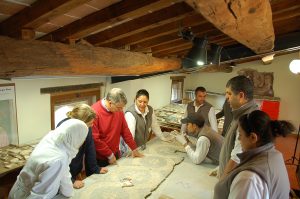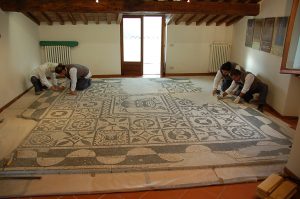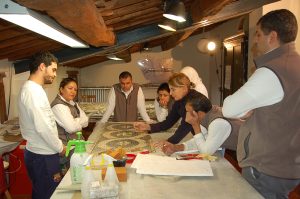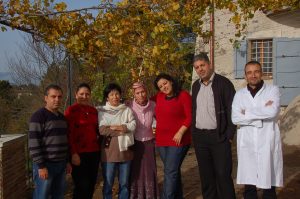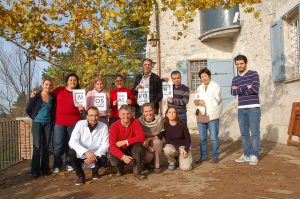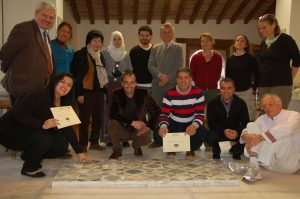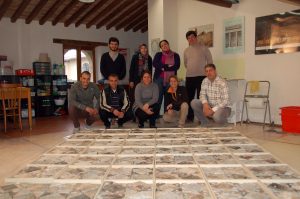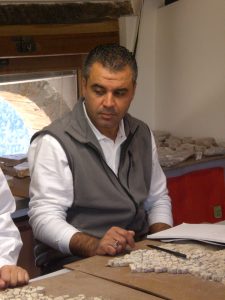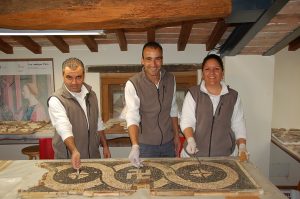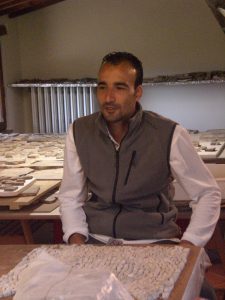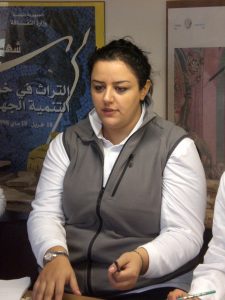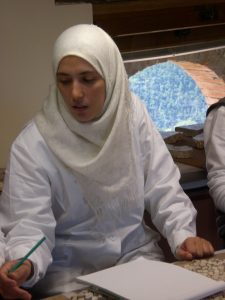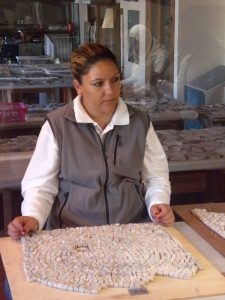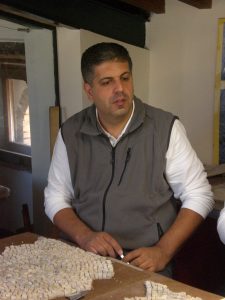Curriculum
Theoretical lectures
Lectures were delivered by CCA teachers and several international conservation experts (see “Faculty and Staff” section). A broad range of topics were covered with the aim of introducing ethical and theoretical principles of modern conservation, with special reference to the treatment of mosaics.
Lectures of the first and second module included:
An introduction to the history of mosaic conservation and to conservation principles in general:
- The significance of cultural heritage
- History of mosaic conservation
- History of mosaic techniques
Materials and techniques for mosaic conservation:
- Restoration techniques
- Lifting techniques
- Lime based mortars in conservation
- Chemistry for conservators
An introduction to conservation management:
- Principles and methodologies for conservation planning
- Documentation
- Health and safety on site and in the lab
International case studies illustrating examples of conservation interventions in the following areas:
- Lifting and repositioning
- In situ conservation
- Preventive consolidation
The second module focused particularly on international case studies and projects presented by the participants. At the end of the course trainees took a final exam and put their newly acquired skills into practice by elaborating a conservation plan for a lifted mosaic belonging to their museum. The plan was presented and discussed among colleagues and instructors.
Laboratory practice
During the first module participants conserved a Roman mosaic from room A of the Villa del Quadraro in Rome, kindly made available by the Museo delle Terme of Rome. The mosaic had been recomposed and mounted on a new support in the previous edition of MCC. In 2012, trainees completed the treatment by cleaning, dividing it in panels and packaging for transport to the museum. At the same time, they conserved a smaller mosaic which was originally adjacent to the larger one: the threshold of room A from the Villa del Quadraro. Laboratory assistants guided trainees through the various stages of treatment: from cleaning, to reconstruction, reintegration and mounting on a new support.
In the second module, practical work focussed on an opus sectile pavement from the Roman villa of Sant’Imbenia, Sardinia, of the second century A.D. The tiles were recomposed in square sections, which were mounted on new supports using a lime based mortar.
Study visits
Several study visits, led by course instructors, integrated the theoretical lectures and were a chance for participants to increase their knowledge of ancient art while exploring Italy. Weekends were spent in Florence, Naples, Ravenna and Venice, visiting important sites such as Pompei, Herculaneum, the Farfa abbey and the medieval city of Rieti, where the course was held. In the course of several visits to Rome, trainees visited museums and monuments as well as some major cultural heritage institutes: the International Centre for the Study of the Preservation and Restoration of Cultural Property (ICCROM), the Istituto Superiore per la Conservazione e il Restauro (ISCR), the stone and mosaics conservation laboratories of the Vatican Museums.
